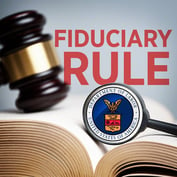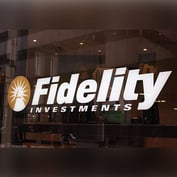In my April 3 blog (See “What Morningstar’s FeeCheck Tells Us About AUM Fees,” AdvisorOne.com), I wrote that because FeeCheck is based primarily on data from brokers, the high AUM fee levels it references and recommends—from 1.6% to 2.5% on a vanilla portfolio—don’t reflect what’s currently being charged in the fiduciary investment advisor market. With that said, the one takeaway in the FeeCheck data for independent advisors is this: There may be room in the retail market to raise their fees.
Dan Inveen of FA Insight recently echoed this sentiment when he told me, “A close examination of pricing practices from across the [independent advisory] industry reveals great opportunity to better leverage pricing as a means for creating more sustainable growth and profitability.” Inveen and his partner at FA Insight, Eliza De Pardo, are possibly the only two consultants today who have the data to back up this claim. They recently published a paper, “Pricing Strategies to Create Growth: An Independent Advisor’s Guide,” based on data from their 2011 advisor survey and created the Pricing Your Advice tool for Pershing Advisor Services. In their work, Inveen and De Pardo provide an intriguing solution to the question that has dogged independent advisors since the creation of financial planning in the early 1970s: How much should they charge their clients? Their answer—value-based pricing—may be the best calculator yet. Whether clients will go along with it is still up in the air.
About 25 years ago, an advisor wrote a letter to me in which he described what he called “the dirty little secret” of financial planning: Retail clients won’t pay directly for planning. He is as right today as he was then. Over the years, advisors have gotten paid for financial planning through nearly every means possible, except directly: selling mutual funds, tax shelters, limited partnerships, annuities and, starting around 1990 or so, fees for managing assets.
AUM fees have revolutionized the business of financial advisors: According to FA Insight data, in 2010, 90% of independent advisory clients were charged using an AUM fee only. Of course, AUM fees are far from a perfect compensation model. To start with, as Morningstar data shows, there’s a built-in incentive to overcharge trusting clients.
For independent advisors, the larger issues with AUM fees are two-fold: As became painfully clear in the aftermath of the 2007-2008 market meltdown, revenues tied to assets create substantial challenges when the value of those assets falls dramatically. Both advisors and their clients would like to believe those are isolated incidents. But the reality is that we’ve seen major market declines four times in the past 25 years—’87, ’91, ’01 and ’07—suggesting that these dips in assets and revenues should be treated as business cycle-as-usual.
The advisory business is already in the first stages of a long-term trend toward depleting asset bases as growing numbers of clients transition into the retirement phase of their lives. As this phenomenon continues to gain momentum, advisors will increasingly have to wrestle with declining revenues per client, while those clients become ever more costly to service.
With these revenue pressures in mind, Inveen and De Pardo made a couple of interesting discoveries while analyzing the data from their most recent advisor survey. First, they noticed that fully 50% of the most successful advisory firms, which they call “standout innovators” (the top 33% of firms with more than $3 million in annual revenues), actively review their pricing structures at least once a year and adjust their fees accordingly. “This is a key practice in supporting dramatically stronger profitability per client,” says Inveen. “We don’t know what adjustments they make, but we do know they use either the cost or the value of their services to make those adjustments. What’s more, only 19% of all the firms we surveyed determine pricing levels primarily on the costs associated with their services. Clearly, firms can and should pay closer attention to firm profitability [and] value when pricing.”
To help advisors get a handle on service profitability, Inveen and De Pardo recommend that firms calculate the “break-even point” for each client. This can be a complex and timely exercise, but they’ve created a system to greatly simplify the process. First, they suggest making two firm-wide calculations: the average overhead per client and the average labor costs per client (the total compensation of all advisors and all staff divided by the number of clients). Combining those two figures gives the average cost per client. Then they suggest including an additional “projected profit” figure: 25% in their examples. The total figure creates a baseline service cost per client.








 June 26, 2012 at 08:00 PM
June 26, 2012 at 08:00 PM









